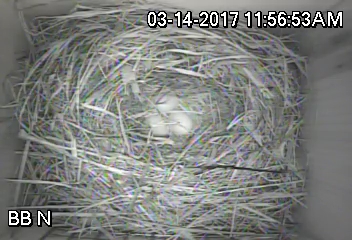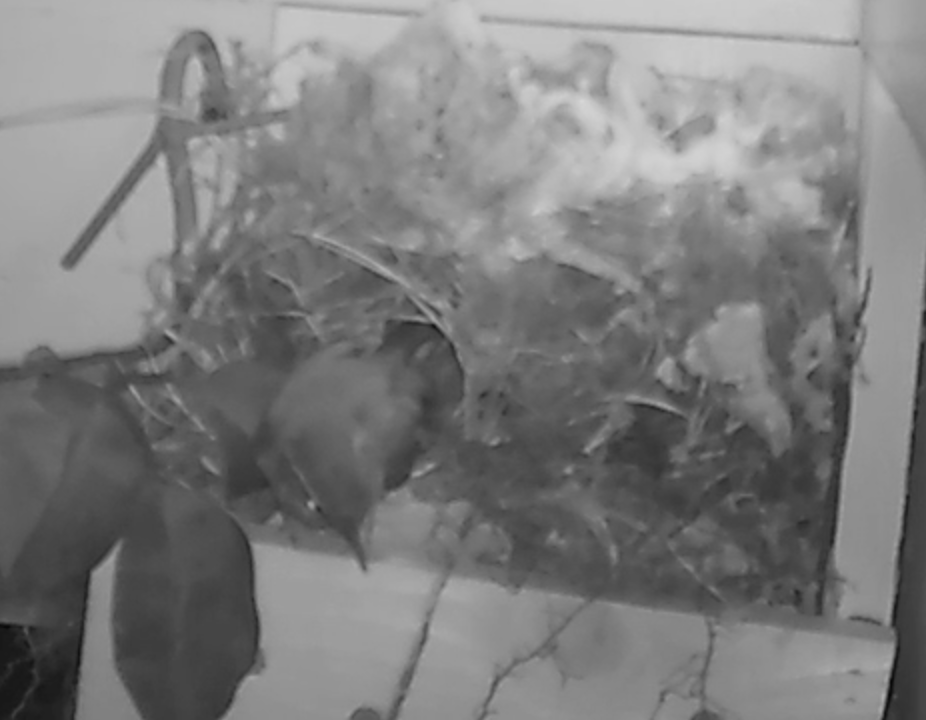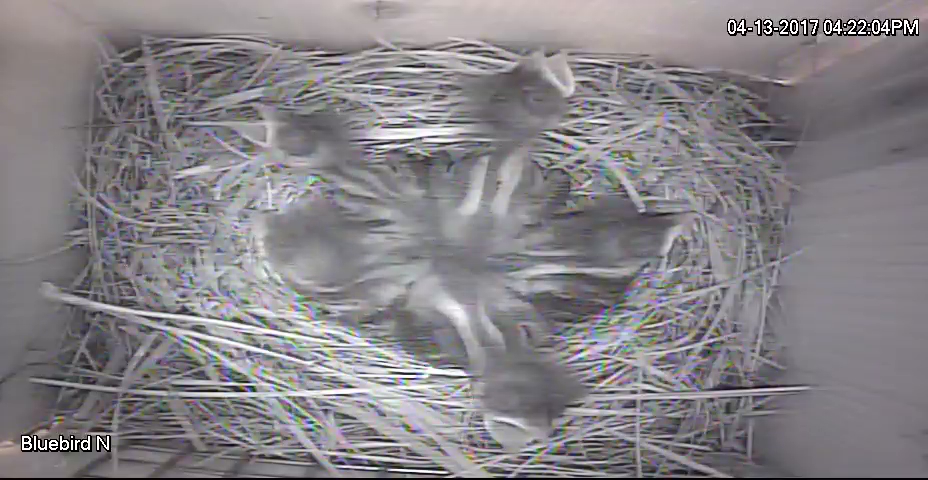2017 presented us with an unseasonably-warm February. The Carolina Wrens and Eastern Bluebirds started nest-building and egg-laying very early. Eggs are laid at the rate of one per day. Female parents do not typically spend the night on the nest until all eggs have been laid -- the idea being to incubate all eggs an equal amount of time so all eggs will hatch about the same time. For spring nesters, especially, this delayed-incubation comes with a risk -- an overnight cold-snap, before the female is sitting on the eggs overnight, can kill the embryos.
The Bluebird pair produced 3 eggs, but then their behavior indicated things were not going according to plan. Soon the pair started bringing additional nesting material to bury the existing eggs. The cold nights had killed the embryos. The pair began the nesting process again -- this time successfully.


The Carolina Wrens had a different story. The pair produced two eggs. BOTH adults spent the night in the nest -- from the time the eggs were laid until the nestlings fledged. I have never seen a male do this before, but somehow this pair knew that it would take the body heat of both parents to keep the embryos/nestlings alive. (One of the two parents is shown leaving the nest in the photo.)
Birds producing eggs well-into July are presented with the opposite challenge. Bird houses can be brutally hot -- even in April. Like dogs, nestlings will pant when hot. They will also align into an X-formation in the nest to allow maximum air circulation around their bodies.

We just won't go into the fans, umbrellas and sun-shades I may have employed on their behalf.
Up next ...